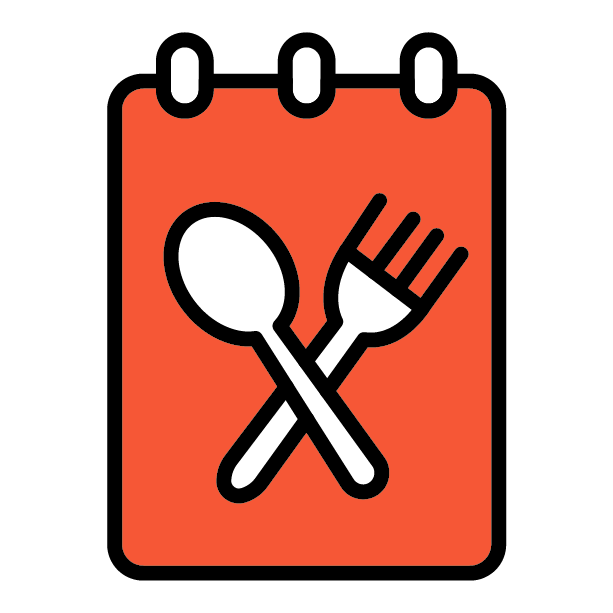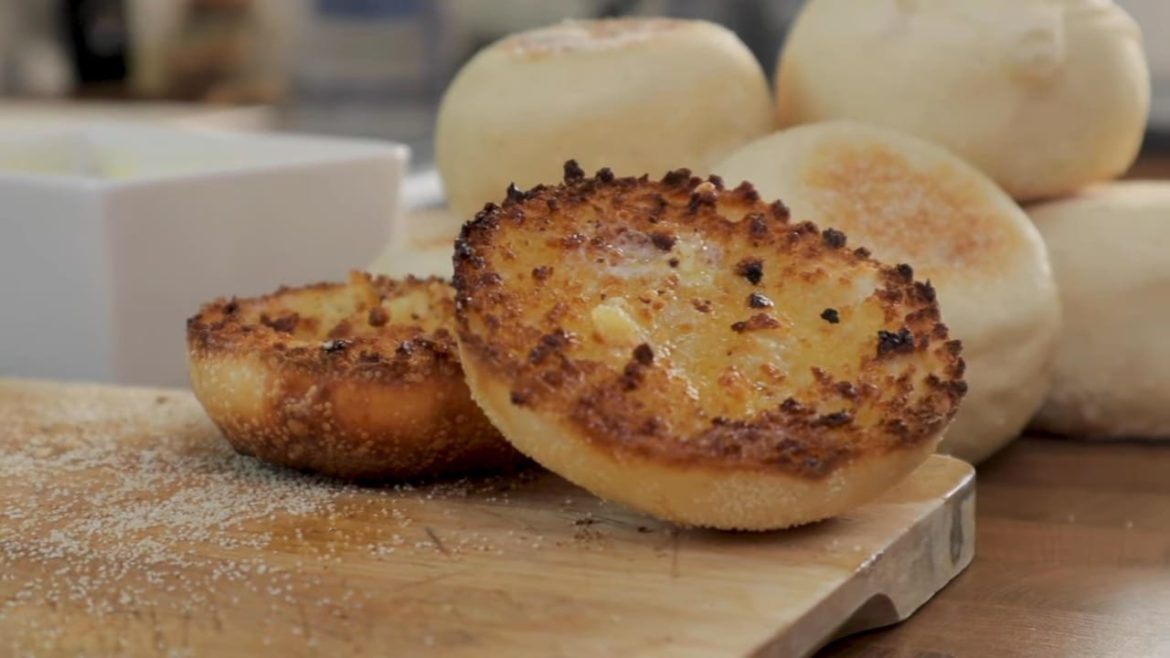This recipe for traditional English breakfast muffins is easy and produces a super light, fluffy, and flavorful muffin. Learn how to shape the English muffins the traditional way!
In my mind muffins would have been baked on the hot plate on top of a Rayburn, Aga, or perhaps a griddle over an open fire/coals. So I doubt that these would have been cut using a pastry cutter. I believe they would have been rolled as small bread (rolls) and baked over direct heat, using a cast iron pan or some kind of griddle. I am guessing these predated traditional oven-baked bread as we know it.
To get a really good rise from your muffin and avoid pinching the edge of the dough, steer clear of using a pastry cutter. Roll the dough into small rolls, about 100g each and proof them as if for burger buns. When they are well proofed you can dip them in the semolina flour and then griddle them. Let me know in the comments if you have any questions!
I like a deep a muffin so prefer to use a combination of a cast iron pan on the hob, and placing the pan in the oven. This gives me an even cook and ensure the middle outside is cooked and doesn’t and up with an all too common raw ring around the middle.
Many people say these were originally opened with a fork to give a textured surface. I am not sure if this is true but it does give a magnificent crumb once toasted.
The dough benefits from a bulk proof overnight in the fridge which gives the bread some complexity in flavour. Traditionally milk wouldn’t have been used but does give a super soft crumb and help with freshness.
This recipe makes just under 900g of dough. I like to weigh the dough after the first proof and then divide it by 9. This makes for a good size muffin and they all fit on my large baking tray together to proof.
Make a big batch and after they have cooled to room temp you can keep them in the freezer.
I am using 13.2% protein flour. You can use a flour with a lower protein content or a mixture of flours to get different results. Just remember that the consistency of the dough will change depending on your choice of flour. This is not an issue but something to recognize as you are working with the dough. Understanding your ingredients and how they perform will help with future bakes!
Recipe:
- Oven temp: 175c on bake mode
- 500g White flour
- 375g Milk 3.5%
- 8g sachet of instant yeast
- 10g of sea salt
Total dough weight: 893g
Recipe video
Enjoy


